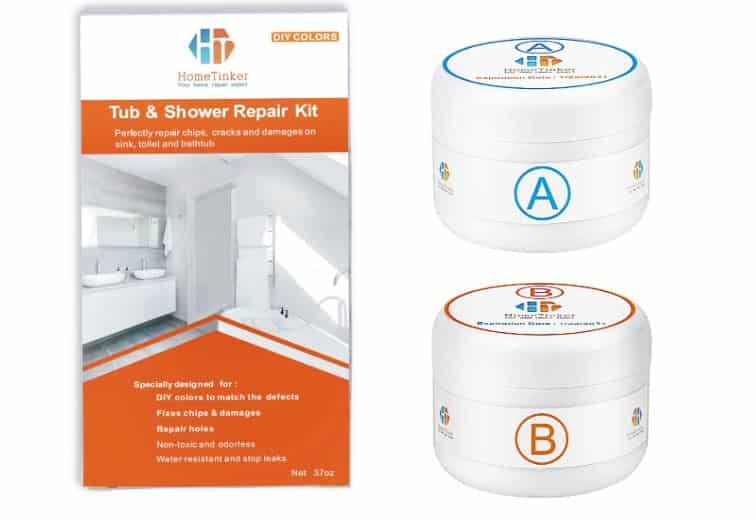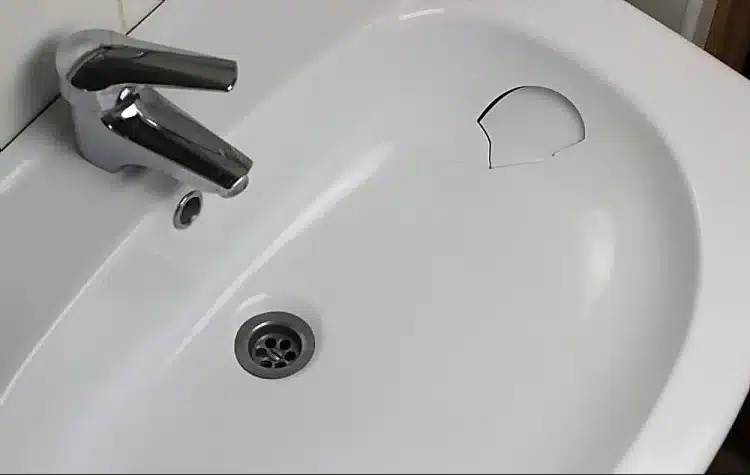Porcelain sinks are a popular choice for many homeowners due to their durability and sleek appearance. However, even the toughest porcelain can become chipped or damaged over time. If you have a chipped porcelain sink, you may be wondering how to fix it.
While it’s best to leave major repairs to the professionals, there are a few simple steps you can take to repair small chips and imperfections on your own.
In this article, we will walk you through the process of fixing a chipped porcelain sink, from gathering the necessary materials to completing the repair. With a little bit of time and effort, you can have your porcelain sink looking good as new.
Things You Need to Fix a Chipped Porcelain Sink
To fix a chipped porcelain sink, you will need the following materials:
- Porcelain repair compound – This is a special type of filler that is designed specifically for repairing porcelain surfaces. It can be found at most hardware stores or online. Read our guide on the best porcelain repair kits.

- Putty knife – You will use this to apply the repair compound to the chipped area.
- Sandpaper – You will use this to smooth out the repaired area once the compound has dried.
- Cleaning solution – Use a mild soap and water or a specifically formulated porcelain cleaner to clean the sink before repairing.
- Rag or sponge – Use this to clean the sink and wipe away excess repair compound.
- Masking tape – You can use this to protect the surrounding area from getting damaged during the repair process.
- Optional: Protective gloves – If you are sensitive to the ingredients in the repair compound, you may want to wear gloves to protect your skin.
Step-by-Step Guide on How to Fix a Chipped Porcelain Like a Pro
Step1: Clean the Sink
Use mild soap and water or a specifically formulated porcelain cleaner to remove any dirt or debris from the chipped area. Cleaning a broken sink can be a little more challenging than cleaning a fully functional one, but it is still important to maintain proper hygiene and keep the area clean.
Use a pair of gloves and a dustpan or a broom and dustpan to carefully sweep up any debris. Clean the sink using mild soap and water or a specifically formulated cleaner for the type of material your sink is made of. If your sink is made of porcelain, you can use a porcelain cleaner
Use a scrub brush or sponge to scrub the inside and outside of the sink, paying extra attention to the broken area.
Step 2: Dry the Sink
Make sure that the chipped area is completely dry before proceeding with the repair. To dry a sink quickly, you can use a clean, dry cloth or paper towels to blot the water from the surface, or you can use a hairdryer on a low heat setting to blow the water away.
Step 3: Prepare the Repair Compound
Follow the manufacturer’s instructions for mixing the repair compound. It is important to mix the compound according to the instructions, as using too much or too little of the activating solution can affect the compound’s ability to harden properly.
Step 4: Apply the Repair Compound
Use a putty knife to smooth the compound over the chip, making sure to fill in any gaps or cracks.
Step 5: Allow the Compound to Dry
Follow the manufacturer’s instructions for drying time. This can vary depending on the type of repair compound you are using.
Step 6: Sand the Repaired Area
Once the repair compound has dried completely, use sandpaper to smooth out the surface of the repaired area.
Step 7: Clean the Sink Again
Use a mild soap and water or a specifically formulated porcelain cleaner to remove any excess compound or dust from the repaired area.
Optional Step:
Apply a coat of sealer. If you want to protect the repaired area from future chips or damage, you can apply a coat of sealer to the repaired area. Follow the manufacturer’s instructions for application.
Allow the sealer to dry completely before using the sink.
Congratulations! You have successfully repaired a chipped porcelain sink. With a little bit of patience and the right materials, it’s a task that any homeowner can tackle.
FAQs About Repairing A Chipped Porcelain Surfaces
Which Compounds Are Good for Repairing Porcelain Surfaces?
There are several different types of compounds that can be used to repair a chipped sink, but it is important to choose one that is specifically formulated for porcelain surfaces. Here are a few options:
- Porc-a-Fix – This is a porcelain repair compound that is available in a variety of colours to match your sink. It is a two-part system that includes a repair compound and an activating solution.
- Devcon Epoxy Bathtub Repair Adhesive – This is a strong epoxy adhesive that can be used to repair chips and cracks in porcelain sinks. It is available in a white colour that can be tinted to match the colour of your sink.
- MagicEzy Hairline Fix – This is a repair compound specifically designed for fixing hairline cracks and chips in porcelain surfaces. It is available in a variety of colours to match your sink.
2. Do Porcelain Sinks Chip Easily?
Porcelain sinks are generally known for their durability, but they can still become chipped or damaged over time. Factors that can contribute to the likelihood of a porcelain sink becoming chipped include the thickness of the porcelain, the quality of the sink, and how it is used and cared for.
Sinks made of thinner porcelain are more prone to chipping than those made of thicker porcelain. In addition, sinks that are of lower quality or that are subjected to heavy use or abuse may be more likely to chip than those that are of higher quality and used with care.
3. How to Prevent Porcelain Sinks From Chipping?
To reduce the risk of a porcelain sink becoming chipped, it is important to use a sink mat or cushion to protect the bottom of the sink and to be careful not to drop heavy objects or place sharp objects in the sink. Regular cleaning and maintenance can also help to prolong the life of a porcelain sink and prevent damage.
4. What Should You Not Put on A Porcelain Sink?
There are a few things that you should not put in or on a porcelain sink to avoid damaging the surface:
- Acidic or abrasive cleaners – These types of cleaners can erode the surface of the porcelain, causing it to become chipped or discoloured.
- Sharp or heavy objects – Dropping heavy objects or placing sharp objects in the sink can cause chips or cracks to form.
- Hot pots or pans – Porcelain is sensitive to extreme temperature changes and can crack if it is subjected to very hot or cold temperatures.
- Metal objects – Porcelain can become scratched or damaged if it comes into contact with metal objects, such as pots and pans.
- Harsh or abrasive scrubbers – Using harsh or abrasive scrubbers to clean a porcelain sink can scratch the surface. Instead, use a soft sponge or cloth and a mild, non-abrasive cleaner.

